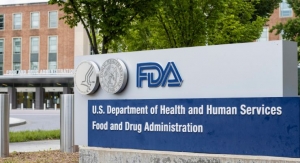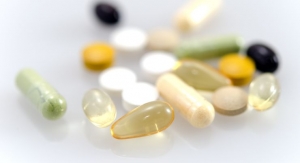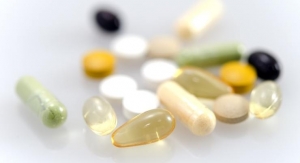Robert S. McQuate, PhD, and Richard C. Kraska, PhD, DABT, GRAS Associates LLC, a Nutrasource company12.09.14
As 2014 transitions to a new year, we are nearing the time that FDA will publish its revised, updated guidance document regarding the regulation of New Dietary Ingredients (NDIs). The anticipated guidance document will supplant the July 2011 draft guidance document, which was viewed by many as having numerous burdensome and unnecessary requirements that discouraged utilization of the NDI notification process.
Since the draft guidance document was published in July 2011, uncertainty has prevailed for many ingredient suppliers regarding the appropriate regulatory pathway to consider to establish regulatory compliance. Not infrequently firms ask whether NDI or GRAS procedures would be the preferred alternative.
It is instructive the draft guidance document addressed the fact that substances that had been used in conventional foods and have GRAS status or direct food additive status (and which have not been chemically altered) may be used in dietary supplement products without the need for NDI notification. This in large measure prompted the above question as to whether one should pursue NDI clearance or establish GRAS status for the substance of interest.
Foods vs. Supplements
The regulatory pathway of choice is determined in large measure by the intended food products that are to contain the subject ingredient, and the regulatory landscape is unequivocal if the intended end product consists of conventional foods where establishing GRAS status is required.
If the intended end product consists solely of dietary supplements—and assuming that all other obligatory requirements in meeting the definition of dietary supplement apply—a firm may choose to document the old dietary ingredient (ODI) status, if feasible, or may pursue regulatory authorization via the NDI notification procedures as detailed in 21 CFR 190.6. Alternatively, an NDI may be authorized for use in dietary supplement products via GRAS status, as long as the additional conditions of prior use in conventional foods and lack of chemical alteration are fulfilled.
Reliance on GRAS status to enable NDIs to be used in dietary supplement products with different safety standards applying has contributed toward the uncertainty expressed by some.
Standard of Safety
Whether NDI or GRAS, substances added to foods must be “safe,” but an important consideration centers on the different safety standards that apply for new dietary ingredients and GRAS substances. The “lesser” safety standard where the NDI does not present a significant or unreasonable risk of illness or injury applies for the components in dietary supplements, but food additives and GRAS substances must meet the “higher” safety standard of reasonable certainty of no harm under the intended use conditions.
Over the past several years, it is not apparent that FDA is making much of a distinction between the two safety standards, thereby making the GRAS option more attractive by virtue of the reduced uncertainties of the process with the associated regulatory judgments. Furthermore, although the new dietary ingredients are subject to the lesser safety standard than GRAS substances, the track record of success with NDI notifications is substantially less (i.e., less than half) than that for GRAS notifications.
The July 2011 draft guidance document addresses in some detail the elements that must be considered to document NDI safety, and this includes consideration of history of use, estimations of dietary intakes, and reliance on animal testing and human studies. FDA’s elaboration takes into consideration recommended tests in concert with anticipated consumption levels/patterns. Just such an approach was developed by FDA in the late 1970s for the safety assessments applied to food additives and GRAS substances as was captured in FDA’s Redbook.
However, the criteria and recommendations found in the Redbook reflect the “higher” safety standard, which does not directly translate to the reasonable expectation of safety that applies to new dietary ingredients. Appropriate judgment must be applied in recognizing the distinction.
As FDA’s Redbook undergoes review and updating regarding testing protocols and study designs, and then in applying what selection of tests and studies are needed to meet the reasonable certainty of no harm standard, care must be exercised in avoiding the reliance on the same scope and depth of studies for new dietary ingredients with its lesser safety standard. However, it is appropriate to embrace the most current protocols and study designs for those tests that are truly needed when assessing the safety of the subject NDI.
Will FDA’s updated NDI guidance document distinguish between the two safety standards from a practical perspective of how the supporting safety information will be applied? Will greater clarity emerge regarding substantive differences? Doing so would be most helpful since the current practice with the lower success rate with NDI notifications and higher success rate with GRAS notifications discourages filing NDI notifications in favor of FDA notification or preparing self-determined GRAS dossiers.
The advantages and disadvantages of generating NDI notifications compared to GRAS evaluations have been detailed elsewhere. However, it is important to note that NDINs have application only to dietary supplement products and not conventional foods. GRAS status, on the other hand, provides the advantage that it applies to those conventional foods that were designated as part of the intended food uses, and it may extend to dietary supplements if the substance in question has been used in foods (without undergoing chemical alterations) prior to addition to dietary supplements. Presently, establishing GRAS status provides the potential advantage of having broader applications to both conventional foods and dietary supplements. Clarity with greater distinction between the lesser and higher safety standards without linking NDI safety to the scope of testing detailed in the Redbook would make the NDI notification process a more attractive alternative than is presently the case.
GRAS Associates, LLC (Bonita Springs, FL), a Nutrasource company, is a technical regulatory consulting firm that assists clients in fulfilling FDA food ingredient regulatory requirements by conducting GRAS assessments and by preparing food contact notifications, new dietary ingredient notifications, and color additive petitions. www.gras-associates.com; www.nutrasource.ca
Since the draft guidance document was published in July 2011, uncertainty has prevailed for many ingredient suppliers regarding the appropriate regulatory pathway to consider to establish regulatory compliance. Not infrequently firms ask whether NDI or GRAS procedures would be the preferred alternative.
It is instructive the draft guidance document addressed the fact that substances that had been used in conventional foods and have GRAS status or direct food additive status (and which have not been chemically altered) may be used in dietary supplement products without the need for NDI notification. This in large measure prompted the above question as to whether one should pursue NDI clearance or establish GRAS status for the substance of interest.
Foods vs. Supplements
The regulatory pathway of choice is determined in large measure by the intended food products that are to contain the subject ingredient, and the regulatory landscape is unequivocal if the intended end product consists of conventional foods where establishing GRAS status is required.
If the intended end product consists solely of dietary supplements—and assuming that all other obligatory requirements in meeting the definition of dietary supplement apply—a firm may choose to document the old dietary ingredient (ODI) status, if feasible, or may pursue regulatory authorization via the NDI notification procedures as detailed in 21 CFR 190.6. Alternatively, an NDI may be authorized for use in dietary supplement products via GRAS status, as long as the additional conditions of prior use in conventional foods and lack of chemical alteration are fulfilled.
Reliance on GRAS status to enable NDIs to be used in dietary supplement products with different safety standards applying has contributed toward the uncertainty expressed by some.
Standard of Safety
Whether NDI or GRAS, substances added to foods must be “safe,” but an important consideration centers on the different safety standards that apply for new dietary ingredients and GRAS substances. The “lesser” safety standard where the NDI does not present a significant or unreasonable risk of illness or injury applies for the components in dietary supplements, but food additives and GRAS substances must meet the “higher” safety standard of reasonable certainty of no harm under the intended use conditions.
Over the past several years, it is not apparent that FDA is making much of a distinction between the two safety standards, thereby making the GRAS option more attractive by virtue of the reduced uncertainties of the process with the associated regulatory judgments. Furthermore, although the new dietary ingredients are subject to the lesser safety standard than GRAS substances, the track record of success with NDI notifications is substantially less (i.e., less than half) than that for GRAS notifications.
The July 2011 draft guidance document addresses in some detail the elements that must be considered to document NDI safety, and this includes consideration of history of use, estimations of dietary intakes, and reliance on animal testing and human studies. FDA’s elaboration takes into consideration recommended tests in concert with anticipated consumption levels/patterns. Just such an approach was developed by FDA in the late 1970s for the safety assessments applied to food additives and GRAS substances as was captured in FDA’s Redbook.
However, the criteria and recommendations found in the Redbook reflect the “higher” safety standard, which does not directly translate to the reasonable expectation of safety that applies to new dietary ingredients. Appropriate judgment must be applied in recognizing the distinction.
As FDA’s Redbook undergoes review and updating regarding testing protocols and study designs, and then in applying what selection of tests and studies are needed to meet the reasonable certainty of no harm standard, care must be exercised in avoiding the reliance on the same scope and depth of studies for new dietary ingredients with its lesser safety standard. However, it is appropriate to embrace the most current protocols and study designs for those tests that are truly needed when assessing the safety of the subject NDI.
Will FDA’s updated NDI guidance document distinguish between the two safety standards from a practical perspective of how the supporting safety information will be applied? Will greater clarity emerge regarding substantive differences? Doing so would be most helpful since the current practice with the lower success rate with NDI notifications and higher success rate with GRAS notifications discourages filing NDI notifications in favor of FDA notification or preparing self-determined GRAS dossiers.
The advantages and disadvantages of generating NDI notifications compared to GRAS evaluations have been detailed elsewhere. However, it is important to note that NDINs have application only to dietary supplement products and not conventional foods. GRAS status, on the other hand, provides the advantage that it applies to those conventional foods that were designated as part of the intended food uses, and it may extend to dietary supplements if the substance in question has been used in foods (without undergoing chemical alterations) prior to addition to dietary supplements. Presently, establishing GRAS status provides the potential advantage of having broader applications to both conventional foods and dietary supplements. Clarity with greater distinction between the lesser and higher safety standards without linking NDI safety to the scope of testing detailed in the Redbook would make the NDI notification process a more attractive alternative than is presently the case.
GRAS Associates, LLC (Bonita Springs, FL), a Nutrasource company, is a technical regulatory consulting firm that assists clients in fulfilling FDA food ingredient regulatory requirements by conducting GRAS assessments and by preparing food contact notifications, new dietary ingredient notifications, and color additive petitions. www.gras-associates.com; www.nutrasource.ca



























